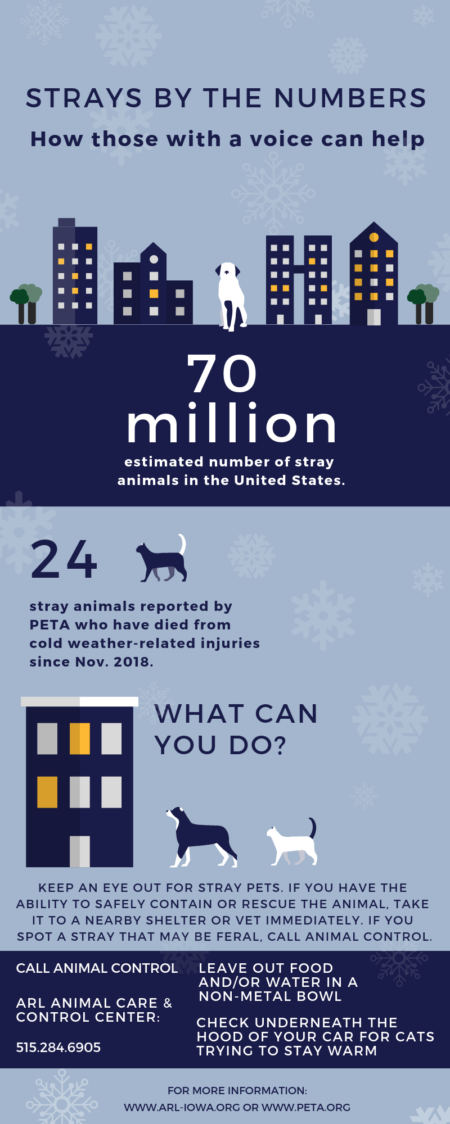How community pets were doing their best to survive freezing temperatures
Through late January and early February, the Midwest and Northeast were bundling up and hunkering down against drastic arctic temperatures. With winter winds reaching speeds of 30 miles per hour, cities had been hit with frigid temperatures falling far into the negatives. Chicago reached its lowest point at a subarctic 23 below. People and their pets were advised to stay indoors if possible due to threats of frostbite and hypothermia after only ten minutes outside.

Unfortunately, those without places to stay warm had to do their best to survive. Cats and dogs, whether they were accustomed to living outside or had gotten stuck, were at serious risk of dying from frostbite or hypothermia. Reports have come out about miraculous rescues of pets that had been left outside; specifically, a frozen cat in Montana was brought back to life after being found in a snow drift.
However, there are more stories about tragic pet deaths after being left outside, even in uninsulated dog houses. Since Nov. 2018, PETA has reported 24 cold weather-related deaths of domestic animals across the United States and Canada. Scott Wilson, the Animal Welfare Intervention Coordinator for the Animal Rescue League in Iowa has been working with the Des Moines community to create awareness about our furry friends outside.
“We’ve had multiple complaints about animals without adequate shelter in this cold snap, but most of them have either been animals that have temporarily been left outside, or we worked with the owners so they understand the requirements to provide their animals shelter without injuries involved,” says Wilson.
Organizations like the Humane Society and ASPCA have advised people to check under the hoods of their cars and underneath the carriage for cats trying to find space to keep themselves out of the wind and snow or leave out nonmetal water or food bowls with food for easy access since cat and dog tongues can stick to freezing metal.
Dr. Jessica Merk, a veterinarian in Des Moines, IA, has not seen any cases of frostbite or hypothermia on animals this year. However, in the past, she has seen more dogs than cats with cases of cold-weather related injuries.
“[This] could be due to people more willing to bring in their dogs or the local average dog and cat lifestyle – most cats in my servicing area are indoor only cats. Every year I see paw pad injuries related to ice,” Merk explains.
Although the snow seems to have melted and the only serious weather coming our way are thunderstorms and rain, please keep an eye out for our furry friends. The Midwest is known for some seriously fast-acting weather changes, so those recent balmy temperatures could change in the blink of an eye. If you or a friend spot an animal in distress, immediately contact your local animal control or shelter. These animals have no voices of their own, so it’s up to us to help them as best as we can.
Infographic by: Landon Hodges

